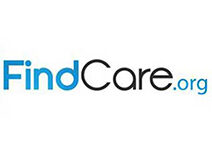A fragile medical safety net stretches across America, made up of thousands of clinics offering free and low-cost health care to those with no other place to turn.

The Findcare.org student team includes medical students and volunteers from other schools and colleges across U-M. (Image courtesy of UMHS.)
Run by a wide range of nonprofit groups, religious organizations, communities, and educational institutions, they serve a vital role — and will continue to do so even as more Americans get access to health insurance.
But finding a clinic, and figuring out what it offers, can pose a challenge.
Enter a group of University of Michigan Medical School students and their colleagues from health and information technology schools at U-M.
Together, they’ve launched findcare.org, a nonprofit website that aims to make it easy to find free or sliding-scale clinics near you, learn who they assist, what services they offer, understand where and when they’re open, and how to contact them.
The site’s database already includes information on more than 500 clinics in Michigan and approximately 2,000 in the Midwest; the Michigan clinics are already available on the website. The Findcare team aims to expand the website into a nationwide resource with information provided by clinics themselves, and by other groups of community-minded students training in health professions.
Community service entrepreneurs
With funding from the U-M Medical School and the Alpha Omega Alpha Honor Medical Society, the students built findcare.org and added clinic information to its database relying primarily on volunteer labor. They used an interactive Google Maps API interface to make searching and navigation easier.
More than two dozen students helped pull together the information on the site from a wide range of sources, and build an interface that works well on mobile devices and desktop computers. You might call them community service entrepreneurs.Together, they created a system for adding and updating clinic information that relies on a form of crowdsourcing, though with added measures to ensure the validity of information. Individuals who submit valid information can become “trusted users” over time. This will make findcare.org a dynamic and essentially self-updating site, unlike previous sites with similar aims.
Cover me
Although the Affordable Care Act has allowed millions of people to get health insurance coverage, millions more still lack it — including those living in states that have chosen not to accept federal dollars to expand eligibility for Medicaid.
In all, 13.4 percent of those living in the U.S. are uninsured, according to the latest poll by the Gallup organization. Federal projections show that as many as 30 million people living in the U.S. could still be uninsured in the year 2023.
That reality makes findcare.org an important resource, says one of the U-M leaders who helped fund the project.
“Our medical students who took the initiative on this project, and their partners from other U-M schools and at other institutions, should take real pride in achieving something that will serve the community in an entirely new way,” says Rajesh Mangrulkar, MD, associate dean for medical student education at the U-M Medical School. “I hope their colleagues at universities across the country will join this movement and make the directory as robust as it can be.”
Operation: collaboration
Michael Gao, a 2014 graduate of the U-M Medical School, and Elizabeth Haworth-Hoeppner, a rising fourth-year medical student, lead the organization along with first-year medical students Michael Huarng and Sanjana Malviya. Findcare now includes students from the U-M Medical School, the schools of Information, Public Health, and Social Work, the colleges of Engineering and Pharmacy, and the Ross School of Business.
They received support and guidance from Sanjay Saint, MD/MPH, the George Dock Collegiate Professor of Internal Medicine at U-M and associate chief of medicine at the VA Ann Arbor Healthcare System. Joel Howell, MD, the Victor Vaughn Collegiate Professor of the History of Medicine, also contributed.
The idea grew out of the frustration experienced by U-M medical students who several years ago sought to create what has now become the U-M Student-Run Free Clinic, with help from faculty physicians. Just finding information on free clinics in the Ann Arbor area was difficult.
The idea of building a website aimed at people without insurance, or experiencing financial hardship, may seem strange, Gao acknowledges.
But studies have shown that 70 percent of low-income people access the Internet for health information, and that inexpensive smartphones have leveled the playing field for Internet access among people of different backgrounds.
The students will continue to add clinics in the Midwest and hope that others will add more. As many as 15,000 free and sliding-scale clinics, and clinics that accept uninsured patients, may exist across the nation.
They also hope the site could be useful to researchers studying the uninsured and the safety net that serves them.




Nikkea Todd - 1980
I offer free massages to low income autistic children in MI thumb (Lexington). When are you adding other cities and alternative healthcare like qigong?
Reply